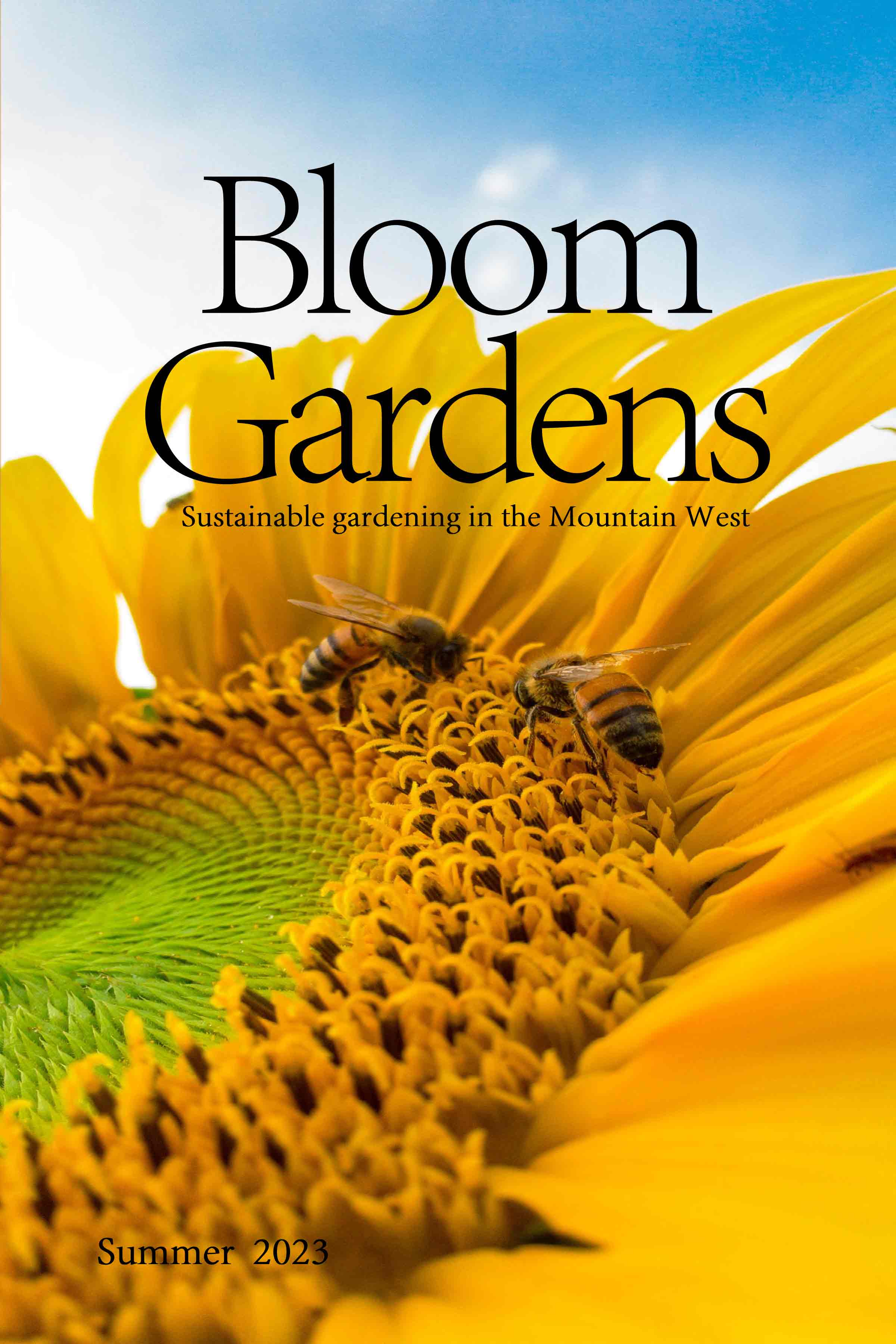- Bloom Gardens
- Posts
- Simple Steps to Sustainability
Simple Steps to Sustainability
Landscape Solutions

Simple Steps to Sustainability
By Kim Eden, Eden’s Garden Design
Some years ago I set out to win a battle raging in my yard. My plants did not fully leaf out, some died, while others only partially bloomed. And I was going to make them all thrive. In early spring with cold weather and just enough moisture to make the flower bed mud, I bundled up in my work clothes determined to prove to my yard who was the boss! Little did I know, I should have hired the boss. My first plan of attack was pruning back the plants so they would grow in more fully and leaf out well. But that didn’t work. Next, I sprayed for bugs and added extra fertilizer, which worked! But sadly, only for a short time. I lost numerous plants and many others began to decline. In desperation, I swapped my spray irrigation system to drip lines and the improvement was immediate. | My plants began to recover and grow more fully. I had less weeds to pull and the area required so much less work. I was so happy with my results that I considered the problem solved. I had won! That is until I began to notice some problems remained. My plants were still covered in bugs and they still turned yellow with iron chlorosis. But, I was not to be deterred. Even though I solved the watering issues I had still not achieved a thriving landscape. So, I looked into a maintenance company and realized they would just spray and fertilize – basically the same thing I tried. (Lame!) |

Green Lacewing

Praying Mantis
After a little more research and knowledge from experts I learned that the fertilizer we are using adds too much extra salt into our already salty soils. This was a huge realization for me. Too much salt will cause nutrient leaching in my plants and thus the decline in healthy thriving plants. As a side note, fertilizer also runs off the lawns and deposited into our lakes and water sources causing algae bloom and other nasties. The short term benefit of the fertilizer did not outweigh the problems it caused. In spraying my bugs, I learned that they returned quickly with new immunities to the sprays. Darn super bugs! This happened even when I started to use more organic and household products to spray them. | There had to be a better solution than fertilizer and bug spray. Something that is more sustainable and not so harmful to the environment and ecosystem. So I decided to hire the real pros – bugs. Experts often quote that 99% of all bugs are beneficial and only 1% of them are harmful. We just often don’t see the beneficial ones and focus on the ones we term pests. I decided to experiment by releasing bugs that prey on the pests in my landscape. The response was amazing. Within two weeks my plants were pest free and remained healthy the entire season. I wanted the beneficial insects to help me every year so I knew I needed to create a habitat in my yard. A home sweet home for bugs. |

Parasitic wasp on aphids

Ladybug Larvae on aphids
I planted their favorite plants full of nectar, I placed a few areas of fresh water source, I added a thick layer of compost in the beds and finally I created spaces for them to nest and reproduce. The only major adjustment I had to make was to leave my perennials, ornamental grasses and pollinator plants untouched for the winter so they had places to hibernate, eat, and hide for the winter. I now do my yard clean up and pruning back in the spring after the bugs are awake and ready to be the defenders of my plants. But, I still needed to solve my fertilizer issues, so I turned to compost tea. I cut up my comfrey and stinging nettle to make my own fertilizer in the form of a liquid tea. | But there are other options available such as Yum Yum, which appears to be compost but has broken down the nutrients into easily digestible food source for your plants. Any liquid fertilizer, especially from the ocean has less salt and is easier for plants to absorb. I avoid adding too much fertilizer because I know it can easily runoff into our lake. In the end, the annual application of compost to my beds has made the greatest impact as a fertilizer. So, I finally won the war. My plants are healthy, green and vibrant and the best part is that it even takes less work than before. |
For your reference, the top performing beneficial insects in my yard have been: Green Lacewing, Praying Mantis, Parasitic Wasp and Ladybug Larvae (from the Lady Bug family)
The top options for low maintenance, long bloom, and pollinating or high nectar perennials that my beneficial insects love are: Agastache (any kind), Bee Balm, Echinacea, Red Hot Poker, Catmint, Lavender, Lamb’s Ears, and any herb - sage, rosemary, oregano, thyme, fennel, etc.

Agastache Sunset

Agastache Blue Fortuna

Red Hot Poker

Article Summary:
Step 1. Switch to drip watering system
Step 2. Use compost and small amounts of liquid fertilizers
Step 3. Plant nectar plants and add water sources
Step 4. Release beneficial insects in yard
Step 5. Prune back only in late winter early spring

